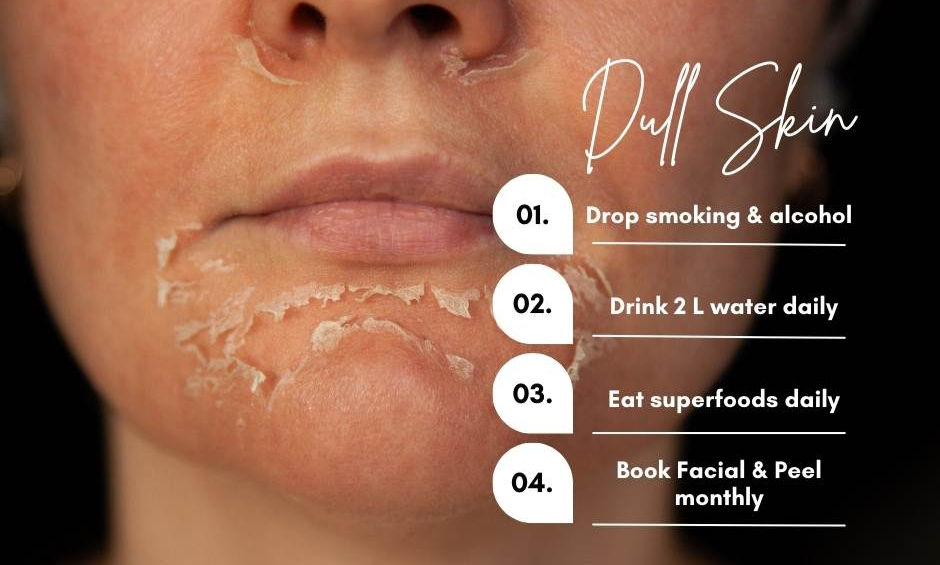
Have You Had A Facial Peel?
Most of us have had a facial but adding a skin facial peel takes your facial, neck and chest skin to the peak of brightness and health.
Skin peels are used on the body skin as well. There are several types of chemical peels used for the face, categorized based on their depth of penetration and the specific skin concerns they address.
Here are the main types:
1. Superficial Peels
Purpose: Target the outermost layer of the skin (epidermis) to treat mild skin issues like dullness, minor acne, uneven skin tone, and rough texture.
Downtime: Minimal to none; slight redness or peeling may occur.
Frequency: Can be done every 2-4 weeks, depending on the strength and skin type.
2. Medium Peels
Purpose: Penetrates deeper into the epidermis and upper dermis. Helps treat fine lines, deeper acne scars, moderate hyperpigmentation, and sun damage.
Downtime: Moderate; skin peeling and redness may last for a few days up to a week.
Frequency: Typically done every 3-6 months.
3. Deep Peels
Purpose: Penetrates deep into the dermis to treat severe skin issues like deep wrinkles, significant sun damage, and precancerous growths.
Downtime: Significant; requires longer recovery time, with peeling, swelling, and redness lasting 1-2 weeks or longer.
Frequency: Can only be done once every few years due to the intensity of the peel.
4. Enzyme Peels
Purpose: A gentler exfoliating option for sensitive skin, enzyme peels dissolve dead skin cells without causing much irritation.
Downtime: None to minimal; ideal for regular maintenance and glow.
Frequency: Can be used more frequently, about once a week or bi-weekly.
6. Retinol Peels
Purpose: Exfoliates and stimulates collagen production while treating acne, hyperpigmentation, and fine lines.
Downtime: Mild to moderate peeling.
Frequency: Often used every 4-6 weeks.
We use superficial and medium peels. The most common peel is with Glycolic Acid.
Glycolic acid is an alpha-hydroxy acid (AHA) commonly used in skincare for its ability to exfoliate and rejuvenate the skin. Here’s how it benefits the skin:
1. Exfoliates Dead Skin Cells
Glycolic acid gently dissolves the bonds between dead skin cells on the surface, encouraging their shedding. This leads to smoother and more radiant skin, as new skin cells replace the old ones.
2. Improves Skin Texture
Regular use of glycolic acid helps improve skin texture by reducing roughness and softening the skin. It can smooth out fine lines and promote a more even skin tone.
3. Brightens the Complexion
By removing dead skin cells, glycolic acid reveals fresher, healthier skin underneath, which results in a brighter and more glowing complexion.
4. Reduces Hyperpigmentation
Glycolic acid can lighten dark spots, sun damage, and post-inflammatory hyperpigmentation from acne. It speeds up cell turnover, which helps fade these discolorations over time.
5. Stimulates Collagen Production
At deeper levels, glycolic acid can stimulate collagen production, making it effective in reducing fine lines and wrinkles. Increased collagen results in firmer, plumper skin.
6. Improves Absorption of Other Skincare Products
By clearing away dead skin cells, glycolic acid allows other active ingredients (like serums or moisturizers) to penetrate the skin more effectively.
7. Fights Acne
Glycolic acid can help unclog pores and prevent breakouts by keeping the surface of the skin clear. It also minimizes the appearance of acne scars by promoting new skin growth.
Important Notes:
Concentration Matters: Glycolic acid can be found in different concentrations (usually between 5%-10% for over-the-counter products, and up to 30% or more in professional treatments).
Sun Sensitivity: It can make the skin more sensitive to the sun, so sunscreen is essential when using it.
Gradual Introduction: Start slow, as it can cause irritation, especially for sensitive skin.
When used correctly, glycolic acid can be a powerful tool for clearer, brighter, and more youthful-looking skin.
We also offer algae peels for sensitive skin and other issues.
If you'd like to book for a peel you can book a consultation or appointment.

Comentários